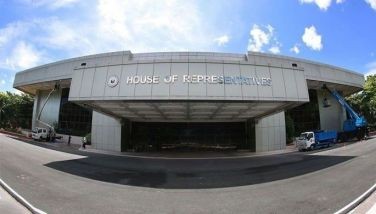Feed millers hitch fortune on agri efficiency
April 7, 2002 | 12:00am
Economic slowdown in recent past and present nagging political wranglings notwithstanding, the country is definitely not down in the dumps, in spite of grim scenarios from the critics and the clueless among us, The numbers, in fact, inspire so much confidence that economic managers and industry leaders are looking at a turnaround. For good reason. World Bank projects the country’s GNP (gross national product) to grow by 3.5 percent this year, a creditable improvement from last year’s 2.5 percent. Along with the GNP growth, the inflation rate of 5 percent lowest in recent years – the numbers have kindled new hope for recovery in the second half of this year.
As is the case in the Philippine economic landscape in the past, agriculture continues to dominate the bulk of production. The NEDA (National Economic and Development Authority) also foresees improvement in world economy by the second half of 2002 that would spur increased infrastructure expenditure leading to stimulation of consumer spending.
Confidence is in their and the outlook is bright for the feed milling business which belongs to the agriculture sector. Industry leaders are upbeat on the direction feed milling will take – which is to hitch its fortune on agricultural productivity and build on efficiency to pursue its own growth, along with agriculture’s.
Among the optimists, Ric Pinca believes in the feed milling sector being able to ride on the potential increase in per capita meat consumption and the two percent population growth, as well as pursue the fast-growing small-to-medium backyard piggery enterprises and the upscale gamecock market and expand its reach to the so called "home mix" market, among others.
Pinca knows fully well whereof he speaks; He is vice-president for external affairs of the Philippine Association of Feed Millers Inc. (PAFMI) which groups 20 feed milling firms that includes the country’s top feed producers. He is also director for corporate affairs of General Milling Corp. which is into flour, yeast, snack, pasta production and soybean milling, among others. Feed milling is one of GMC’s flagship enterprises.
Pinca explains why feed milling could ride on the potential increase in per capita meat consumption; "The feed milling industry will grow as we consume more and more meat and poultry products. Include, also, fish consumption because feed millers supply feeds for aquaculture production. The feed milling sector and the combined meat, poultry and fishery sectors enjoy a symbiotic relationship that sustains each other’s growth.
"The feed milling sector prepares the raw materials into the proper form and the right formula to maximize the growth and conversion of the cattle into meat and milk, the hog into pork, the poultry into meat and eggs and fish into our favorite dining fares. With the growing consumptions of these food items the growth of the feed milling enterprise will naturally follow." (To be Continued)
As is the case in the Philippine economic landscape in the past, agriculture continues to dominate the bulk of production. The NEDA (National Economic and Development Authority) also foresees improvement in world economy by the second half of 2002 that would spur increased infrastructure expenditure leading to stimulation of consumer spending.
Confidence is in their and the outlook is bright for the feed milling business which belongs to the agriculture sector. Industry leaders are upbeat on the direction feed milling will take – which is to hitch its fortune on agricultural productivity and build on efficiency to pursue its own growth, along with agriculture’s.
Among the optimists, Ric Pinca believes in the feed milling sector being able to ride on the potential increase in per capita meat consumption and the two percent population growth, as well as pursue the fast-growing small-to-medium backyard piggery enterprises and the upscale gamecock market and expand its reach to the so called "home mix" market, among others.
Pinca knows fully well whereof he speaks; He is vice-president for external affairs of the Philippine Association of Feed Millers Inc. (PAFMI) which groups 20 feed milling firms that includes the country’s top feed producers. He is also director for corporate affairs of General Milling Corp. which is into flour, yeast, snack, pasta production and soybean milling, among others. Feed milling is one of GMC’s flagship enterprises.
Pinca explains why feed milling could ride on the potential increase in per capita meat consumption; "The feed milling industry will grow as we consume more and more meat and poultry products. Include, also, fish consumption because feed millers supply feeds for aquaculture production. The feed milling sector and the combined meat, poultry and fishery sectors enjoy a symbiotic relationship that sustains each other’s growth.
"The feed milling sector prepares the raw materials into the proper form and the right formula to maximize the growth and conversion of the cattle into meat and milk, the hog into pork, the poultry into meat and eggs and fish into our favorite dining fares. With the growing consumptions of these food items the growth of the feed milling enterprise will naturally follow." (To be Continued)
BrandSpace Articles
<
>
- Latest
Latest
Latest
May 14, 2024 - 3:43pm
By Ian Laqui | May 14, 2024 - 3:43pm
April 10, 2024 - 5:12pm
By Ian Laqui | April 10, 2024 - 5:12pm
March 4, 2024 - 3:32pm
By Ian Laqui | March 4, 2024 - 3:32pm
March 4, 2024 - 2:12pm
By Kristine Daguno-Bersamina | March 4, 2024 - 2:12pm
February 17, 2024 - 2:31pm
February 17, 2024 - 2:31pm
Recommended




























